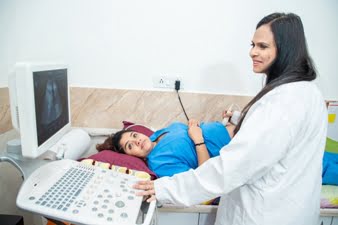Why is USG Both Leg Doppler Venous Important?
This test plays a crucial role in diagnosing and managing several venous conditions. If you’re searching for a best sonography centre near by me Diagnopein offers advanced imaging and accurate results. Here are the key reasons why it is important:
1. Detection of Deep Vein Thrombosis (DVT): One of the main purposes of a venous Doppler ultrasound is to detect DVT, a condition where blood clots form in the deep veins of the leg. DVT is a serious condition that can lead to complications such as pulmonary embolism if a clot travels to the lungs. Early detection through this test is vital for initiating prompt treatment and preventing life-threatening complications.
2. Evaluation of Varicose Veins: Varicose veins are swollen, twisted veins that often occur due to poor blood flow and valve dysfunction in the veins. This test helps assess the severity of varicose veins and determines whether there is underlying chronic venous insufficiency or other issues contributing to the condition.
3. Assessment of Venous Insufficiency: Venous insufficiency occurs when the veins are unable to efficiently return blood from the legs back to the heart, leading to symptoms like leg swelling, pain, and skin changes. The Doppler ultrasound can detect the presence of reflux (backward blood flow) in the veins, which is a common indicator of venous insufficiency.
4. Monitoring Post-Treatment or Surgery: For patients who have undergone treatment for venous conditions, such as sclerotherapy, vein stripping, or laser therapy, the Doppler ultrasound helps monitor the effectiveness of the procedure and check for any complications like recurrent blood clots.
5. Guidance for Treatment Decisions: By providing detailed images and information about blood flow in the veins, this test helps doctors decide on the best treatment options, whether that involves medication, compression therapy, or surgical intervention.
How is USG Both Leg Doppler Venous Performed?
1. Preparation: Generally, no special preparation is required for this test. However, it is advisable to wear loose, comfortable clothing, as you may need to remove clothing from your lower legs for the examination.
2. Procedure: You will lie down on an examination table, typically with your legs slightly elevated to improve blood flow visualization. The technician will apply a warm gel to the skin of your legs to enhance the contact between the ultrasound probe and your skin. The ultrasound transducer (probe) is moved over the skin of both legs. It emits sound waves that bounce off the blood vessels and return as echoes, which are then translated into real-time images on the monitor. The technician will apply gentle pressure with the probe to compress the veins, checking for any areas where compression fails, which can indicate the presence of a blood clot. The procedure assesses both the superficial veins (close to the skin's surface) and deep veins (located deeper in the leg muscles).
3. Duration: The entire procedure usually takes about 30 to 45 minutes, depending on the complexity of the examination and the number of veins being evaluated.
4. Post-Procedure: After the test, the gel is wiped off, and you can resume normal activities immediately. There is no recovery time needed, as the test is painless and non-invasive.
Who Should Consider a USG Both Leg Doppler Venous?
The USG Both Leg Doppler Venous is particularly useful for individuals with symptoms or risk factors related to venous disorders. Some groups of people who may benefit from this test include:
1. Individuals with Leg Pain or Swelling: People experiencing persistent leg pain, swelling, or heaviness may have venous insufficiency or a blood clot. This test helps identify the cause of these symptoms.
2. Patients Suspected of Having DVT: Those with risk factors for DVT, such as recent surgery, prolonged immobilization, pregnancy, or a history of blood clots, may be advised to undergo this test to rule out or confirm the presence of DVT.
3. People with Visible Varicose Veins: Individuals with prominent, twisted, or swollen veins on the legs should consider this test to evaluate the severity and underlying causes of varicose veins.
4. Patients Undergoing or Recovering from Vein Treatment: For those planning or recovering from treatments like endovenous laser therapy or vein ablation, this ultrasound can provide essential pre- and post-treatment evaluations.









